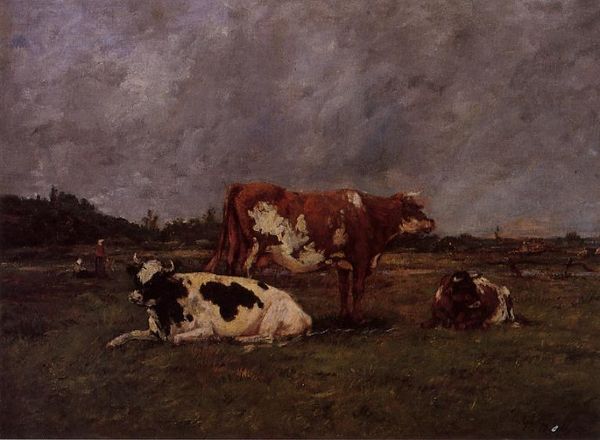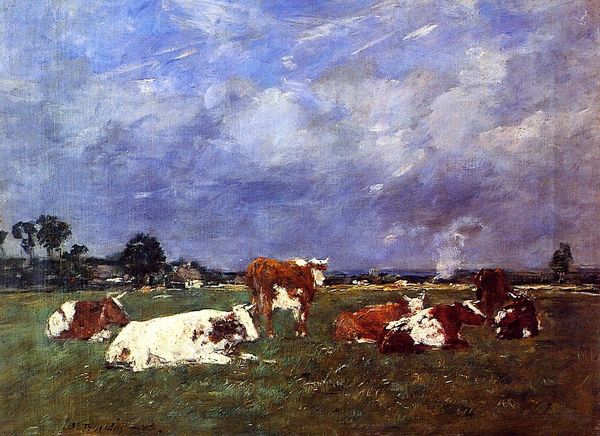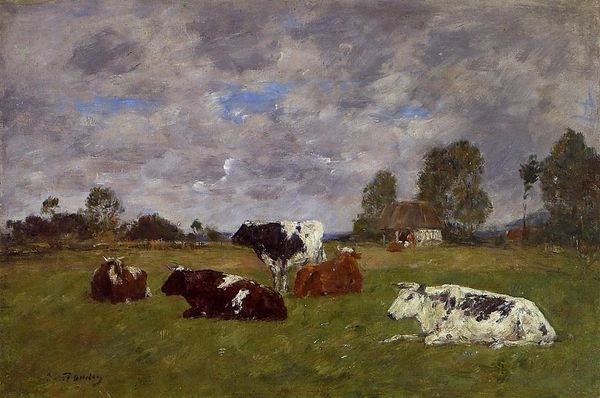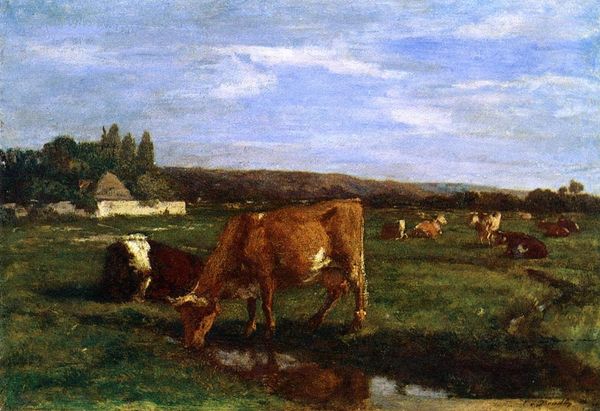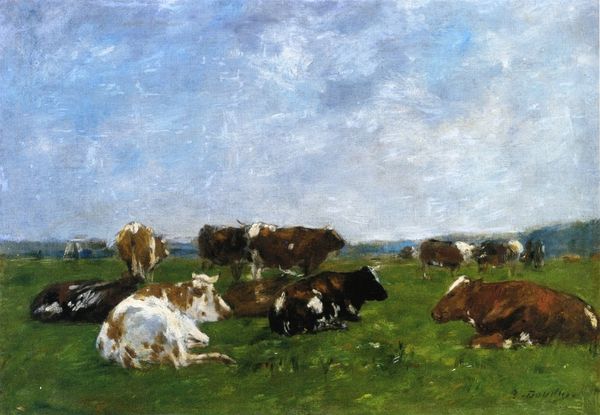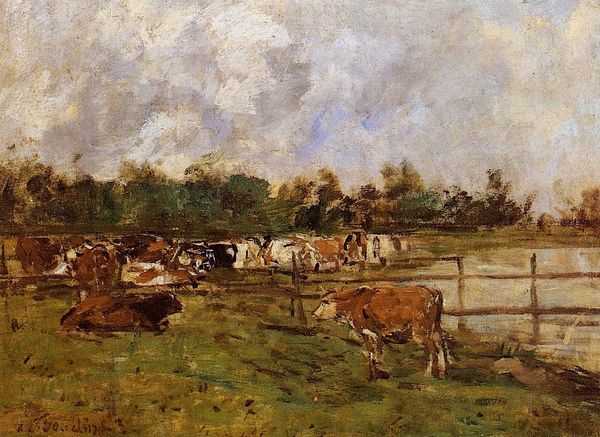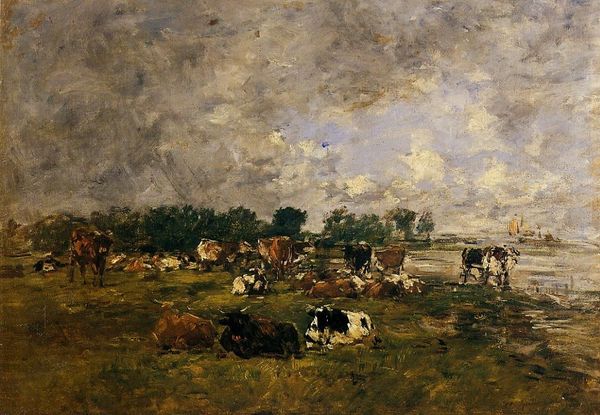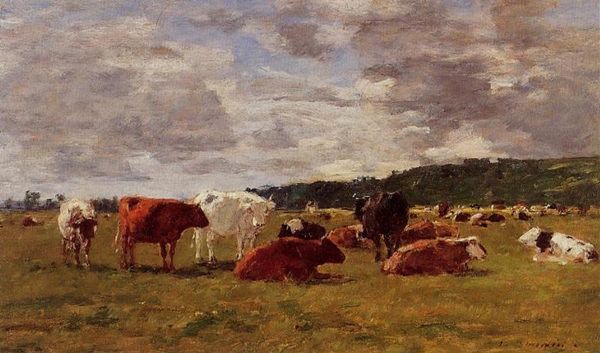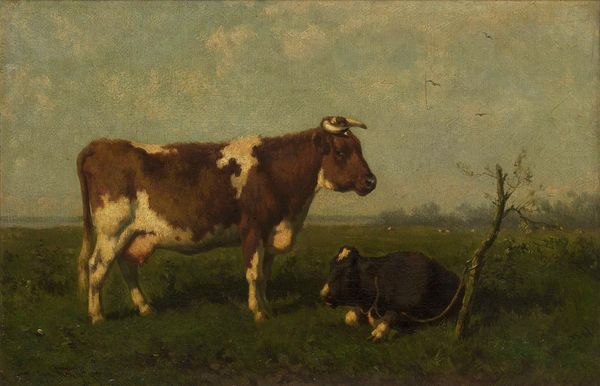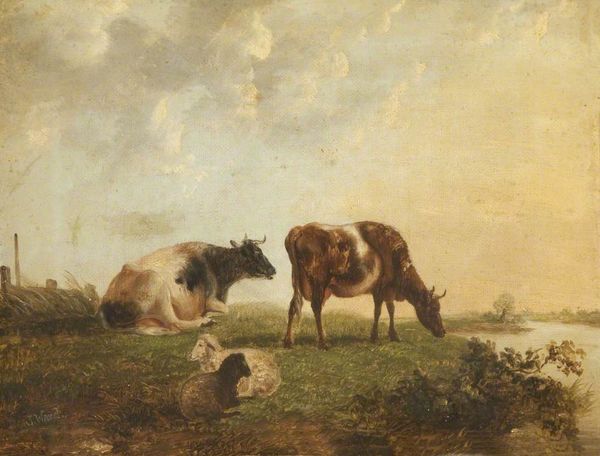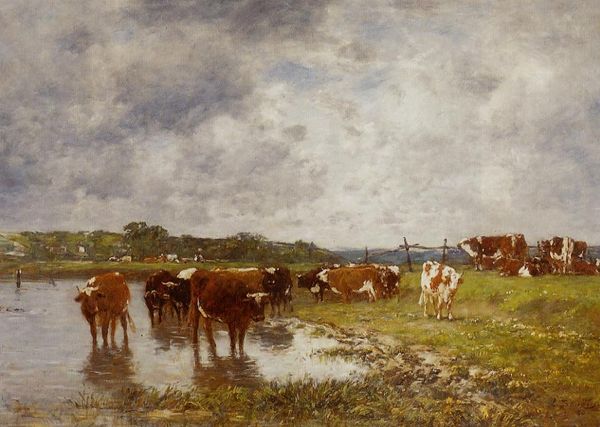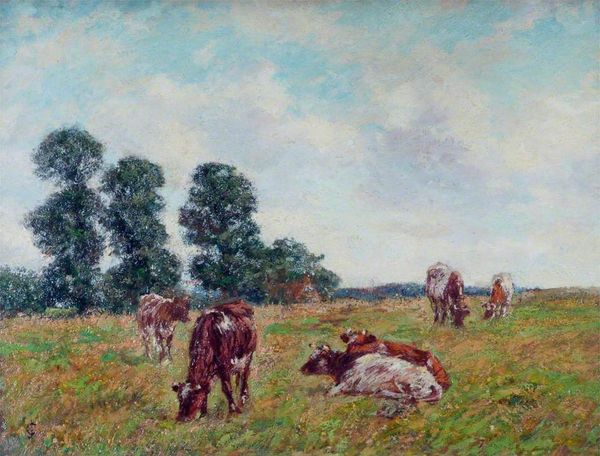
painting, plein-air, oil-paint
#
animal
#
painting
#
impressionism
#
plein-air
#
oil-paint
#
landscape
#
oil painting
#
genre-painting
Copyright: Public domain
Curator: Eugène Boudin painted "Cows in a Meadow, Morning Effect" in 1882. It’s an oil painting very much in the Impressionist style and gives one a feeling for the pastures of northern France. Editor: My initial impression is of quietude and the weight of the humid air. It's as if the cows are hunkering down, sensing a storm on the horizon. Even their coloration seems to blend in with the earth, suggesting a deep connection to this land. Curator: Boudin, you see, was an early influence on Monet. He urged Monet to paint en plein air, directly from nature, and one can observe Boudin practicing it here, taking a traditional theme, animal painting, outside into modern, avant-garde practice. One can only assume, given the time period, that its original owner class would appreciate and value the artist taking genre outside into nature to elevate his class. Editor: Yes, and note how the composition guides the eye: the relatively still and solid cattle anchored in the immediate foreground, the open space drawing into a middle distance of more, smaller cattle grazing, all framed by the forest along the horizon, which brings a real balance to the landscape as a symbol for traditional rural life. It’s also remarkable to me that the cattle serve to ground the natural elements, perhaps demonstrating humankind and animal's connectivity with the land. Curator: And of course, paintings such as this were actively involved in forming public tastes. Pictures like these demonstrated a clear departure from established Salon painting. Landscapes themselves grew in value for collectors interested in capturing 'real life'. This is no longer about history painting or mythological narrative; these cows are here, now. Editor: Indeed, and I wonder about the individual markings on each animal, almost like their own unique fingerprints, perhaps representing individual personalities, while also echoing the way we remember loved ones long after they pass through photographs, but of course, back then, through painting, because no photographs were affordable or convenient for personal and/or commercial uses. Curator: Yes, what I think makes this particularly interesting is thinking of how images were transforming throughout Europe. A rural, pre-industrial theme takes on modern significance, given what industrialization actually did to the countryside and animal husbandry. A painting such as this allowed new city dwellers a chance to keep alive and aestheticize an older view. Editor: Seeing this particular piece reminds me how art functions as both mirror and a memory keeper. Even with subtle imagery, works such as these hold a deep connection to identity, land, and cultural memory, and even as an example of cultural transition during those eras. Curator: Very well said! And on that note, I believe we must leave our listeners to experience "Cows in a Meadow, Morning Effect" with all of its unique cultural insight, considering what such works signified for art at that time.
Comments
No comments
Be the first to comment and join the conversation on the ultimate creative platform.
